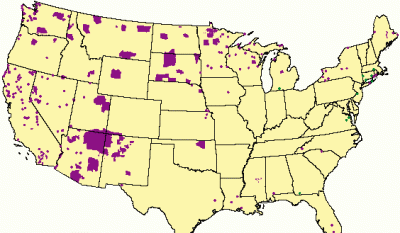 "This is not where my people were from."
"This is not where my people were from."
Pam Halverson, Lower Sioux Indian Community, 2010
A reservation is an area of land managed by a Native American tribe under the U.S. Bureau of Indian Affairs. There are approximately 310 Indian reservations in the United States although there are more than 550 federally recognized tribes. This is because some tribes have more than one reservation, some share reservations, while others have none, often due to a lack of federal recognition. Because of past land allotments (for example, under the Dawes Act of 1887) some reservations are fragmented, with pieces of tribal, individual, and privately held land, some of it owned by non-Indians. The collective geographical area of all reservations is 55.7 million acres, or about 2.3% of the area of the United States.
Primary
The U.S-Dakota War Oral History Project. Minnesota Historical Society.
Secondary
American Indian Communities in MinnesotaBasic Principles. Minnesota State Senate.
Jaeger, Lisa. Tribal Nations The Story of Federal Indian Law, AK: Tanana Chiefs Conference, 2007.
Primary
Kappler, Charles J. Indian Affairs: Laws and Treaties. Washington: Government Printing Office, 1904. Oklahoma State Library, 2003.
Secondary
Jaeger, Lisa. Tribal Nations The Story of Federal Indian Law, AK: Tanana Chiefs Conference, 2007.
Washington State Historical Society: Federal Indian Policy




